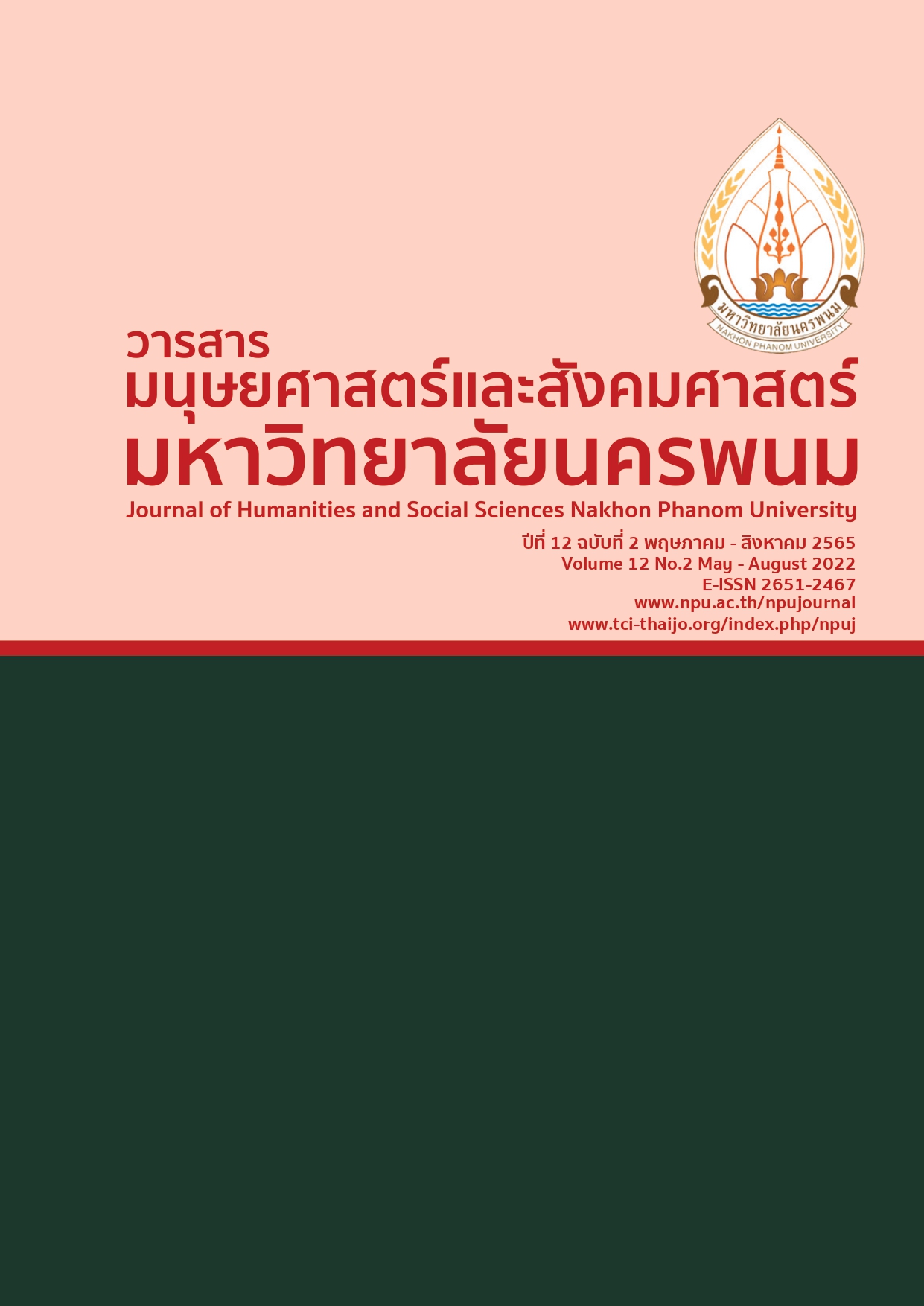Adaptation of Cambodian Genocide Victims in Stories “4 Years in Cambodia” and “Escape from the Hell”
Main Article Content
Abstract
The purposes of this research were to study the adaptation of Cambodian Genocide victims and to compare the thoughts of adaptation of Cambodian Genocide victims in the stories “4 Years in Cambodia” and “Escape from the Hell”. The population and samples in the research were 2 victims of the Cambodian Genocide: Yasuko Naito and Chia Kimlang. The research instruments were the application of literature and society concept which was used to consider how the writer reflected the society at that time, and Roy’s Adaptation Model was used to describe the way of people’s adaptation according to stimulation or environmental contexts which divided into 3 aspects as follows: 1) focal stimuli, 2) contextual stimuli, and 3) residual stimuli. The results showed that (1) the Cambodian Genocide victims adapted to focal stimuli, contextual stimuli, and residual stimuli harmoniously to the environment, , so the Cambodian Genocide victims survived from the genocide war in Cambodian. (2) The study of the Cambodian Genocide victims’ adaptation found that the victims had different thoughts of adaptation due to different experience and background. Yasuko chose the concept of “When in Rome, do as Romans do”, meanwhile Kimlang used the concept of “The journey to find the dream path”. These adaptations helped the victims survived and passed through the brutal crisis and realized that the value of life was the contending toward the fatality. This research indicated that common characteristics are patience and earnestness to evacuate to a safe country. The struggle for survival lesson of the victims made us realize the value of human life which drove all to yearn for freedom and long life.
Article Details

This work is licensed under a Creative Commons Attribution-NonCommercial-NoDerivatives 4.0 International License.
References
songkhrāmyen khō̜ng nak khīan Wīatnām Kamphūchā læ mong - Lāo . [Narrative and Displacement
in Post-Cold War Literature of Vietnamese, Cambodian and Laotian-Hmong Writers. (Unpublished
Doctor of Philosophy Thesis)]. Chulalongkorn University. Bangkok, Thailand.
Boonkhachorn, T. nawaniyāi kap sangkhom Thai (2475-2500). [Novels and Thai Society (1932-1957)].
Bangkok: Faculty of Arts, Chulalongkorn University.
Dy, Kh. (2007). A History of Democratic Kampuchea (1975–1979). Phnom Penh: Documentation Center of
Cambodia.
Khongphianthum Ch. (2010). kānsưksā wikhro̜ kawīniphon Khamēn thī kīeokap kān khā lāng phaophan . [An
Analytical Study of Cambodian Genocide Poetry (Unpublished Doctor of Philosophy Thesis]. Silpakorn
University. Bangkok, Thailand.
Maleehaul, P. (2008). phon khō̜ng prōkrǣm kāndūlǣ phūpūai tām patčhai singrao læ kān sœ̄msāng thaksa
kān fư̄nfū saphāp phūpūai dōi kānmī sūanrūam khō̜ng khrō̜pkhrūa tō̜ kān prap tūa khō̜ng phūpūai ʻammaphāt thō̜n lāng .
[Effect of the program of stimulti-based patient care and rehavilitative skill
enhancement with family involvement on adaptation among paraplegic patients. (Unpublished
master’s Thesis)] Chiang Mai University. Chiang Mai, Thailand.
Nawawichit, Ph. (2018). nī fai narok .[Escaped from the Hell]. Bangkok: Butterfly Publishing.
Nawawichit, Ph. (2018). sī pīn rok nai Khamēn. [4 Years in Cambodia]. Bangkok: Butterfly Publishing.
Roy's Adaptation Model, 2021, October 9. https://nursekey.com/17-adaptation-model/
Saengkanokkul, P. (2015). kotmāi ratthammanūn læ sathāban kānmư̄ang Kamphūchā : čhāk
khwāmkhatyǣng thāngkān mư̄ang sū kān sathāpanā niti rat prachāthipatai. [Constitutional Law and
Political Institutions of Cambodia]. Bangkok: Thammasat University.


